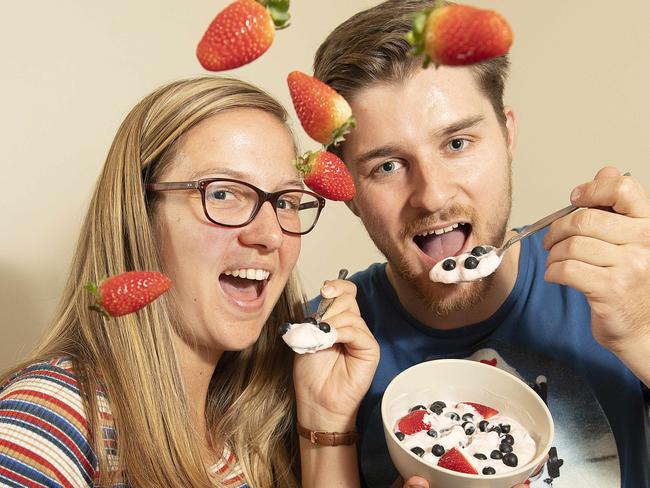Dietitian’s warning over so-called ‘healthy’ snacks
MISLEADING labelling on ‘healthy’ snack food makes it even more important for consumers to watch what they eat, a dietitian warns.
VIC News
Don't miss out on the headlines from VIC News. Followed categories will be added to My News.
SNEAKY marketing and misleading labels are combining to trick shoppers into buying junk snacks that masquerade as healthy choices.
Dietitian Amanda Clark said shoppers needed to follow just a few basic steps to beat the confusion.
PARENTS STRUGGLE TO UNDERSTAND LABELS AND KIDS’ NUTRITION NEEDS
HEALTHY EATING: AUSTRALIANS CONFUSED OVER FAD DIETS
EAT REAL: HOW TO EAT HEALTHY WITHOUT THE COST OR COMPROMISE
These included learning how to read nutrition labels and awareness of portion sizes.
“Companies produce something that looks like a single serve but is sometimes twice as big as the serving size listed on the nutrition guide,” Ms Clark said.
“There is one trail mix which is 45g a packet but the serving size on the label is 25g.
“This is misleading, and makes it look like a smaller lower-calorie option than it really is.”
Ms Clark, author of the 2018 Healthy Snack Bible, said manufacturers often made a big deal of an ingredient, or lack of it, to infer a snack was healthier than it really was.
One claimed to be “low in sugar” when it was high in unhealthy palm oil. Claims of “100 per cent fruit” could also mislead.
“Some snack bars are 100 per cent fruit, but that fruit can be stripped back to the fructose so there’s not much of the original fruit left,” she said.
Another sneaky packaging tactic is highlighting just one or two healthier options among all the ingredients.

“You might buy something because it’s ‘full of vanilla and figs’ but this may be only a small part of the overall ingredients,” Ms Clark said.
Coffee often caught out people wanting to avoid eating unhealthily between meals, she added.
A regular milk-based coffee contained about 200 calories, but tall 600ml cups delivered a hefty 600 calories.
Health-conscious Josh Dennis, 24, of Fitzroy North, said he avoided buying anything branded as a “healthy snack”, instead opting for natural foods.
“There are good healthy snacks such as fruit and vegies,” he said.
HOW MUCH CAN I EAT?
Dietitian Amanda Clark says people should eat no more than three meals and three snacks a day. Those wanting to lose weight should eat meals of 1470kj or 350 calories, and snacks of 420kj or about 100 calories
LOOK FOR GOODNESS
Use the “per 100g” figure to compare between products
Fats are usually listed as “total fat” and “saturated fat”. Make sure no more than one-third of the fat is saturated
A low-fat food has less than 3g of fat per 100g
Go for products with less than 10g of sugar per 100g or 20g per 100g if it has a lot of fruit
Beware of the high sugar content in some foods that appear ”healthy”, such as muesli bars and trail mix
A high-fibre food has more than 3g per 100g, and low-salt foods contain less than 120mg of sodium per 100g
EVERYDAY SNACKS
Whole fruits
Vegies and dip
Almonds
Small yoghurt serve
And for occasional treats, a mini pack of biscuits or cheese and crackers, or a 30g muesli bar
Source: the 2018 Healthy Snack Bible
The 2018 Healthy Snack Bible is available via greatideas.net.au.


